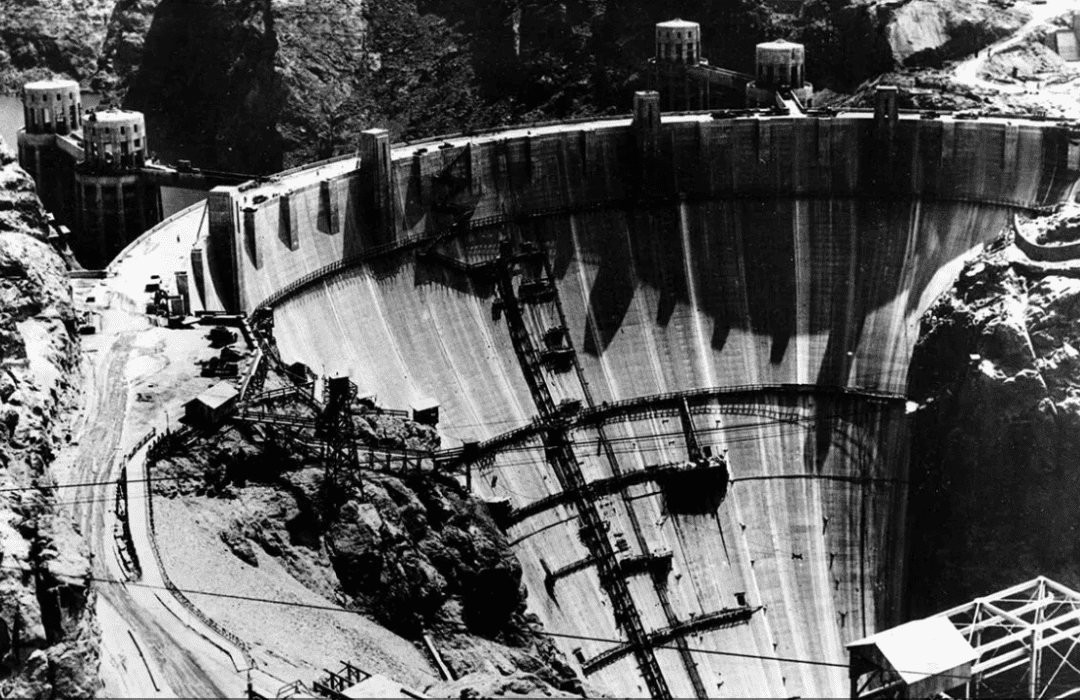The origins of hydropower in the United States are ripe with characters both remembered and forgotten. These individuals saw the electrification of the country as a goal worth dedicating one’s life to, and while not all are captured by history, writers like Bob Underwood are preserving their legacy.
Dam It! Electrifying America and Taming Her Waterways is Underwood’s first book. Inspired by the life and stories of his grandfather, a dam-builder, Underwood dedicated himself to researching and highlighting stories from America’s hydropower history.
Underwood’s multi-faceted understanding of energy development is complimented by his familial connection to dam construction, lending a clarity of vision to the story told in Dam It! Featuring 165 stunning photographs, including images of the original Niagara Falls Power Station, rare photos of historical figures, and the construction of hydropower projects, Dam It! provides readers with a compelling look into a world shaped by innovation.
The notion of “hydro heritage,” as seen through Underwood’s personal connection to the electrification of the United States, takes physical form at Clean Currents 2023. In Cincinnati, Ohio, from October 10-13, National Hydropower Association (NHA) has created a hydro heritage station, which offers Clean Currents attendees the opportunities to share photos, stories, and experiences about hydropower’s importance in their lives. Additionally, Bob Underwood will be available to sign and sell copies of the book, as well as to speak with attendees 1×1.
Dam It! Electrifying America and Taming Her Waterways was published on March 7, 2023, by Coloma Press. Coinciding with the release of the book, Underwood spoke with POWERHOUSE about hydropower’s fascinating story, the renewable’s future, and lessons from the past.
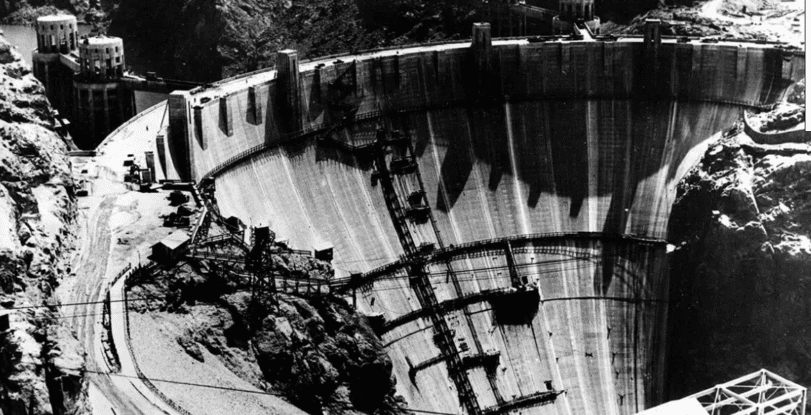
The Hoover Dam under construction in 1935.
POWERHOUSE: Discuss your background and history. How did you get involved in energy work? What was the inspiration for Dam It!?
Bob Underwood: I come from a long line of engineers. Both of my grandfathers were engineers. My father was an engineer. I hold three engineering degrees from Stanford University—a BS in Mechanical Engineering (with Great Distinction) and a MS and PhD in Aeronautical and Astronautical Sciences. My PhD dissertation was in computational fluid mechanics. I also earned my MBA from Santa Clara University.
I have lived around dam people my entire life.
I was born in Paducah, Kentucky, as my maternal grandfather, legendary dam builder George Jessup, was completing the construction of nearby Kentucky Dam. While I was a child, my parents took me to see other dams whose construction my grandfather had supervised. I lived with my grandfather Jessup while I was in high school.
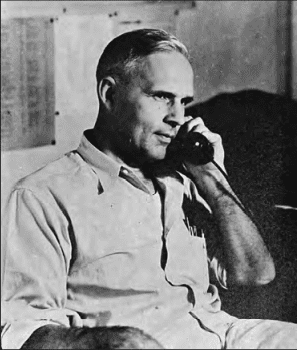
Photograph of George Jessup taken during the construction of Bagnell Dam in Missouri.
My thirty-plus year career in venture capital/private equity has been focused on developing technology-based businesses. I began my business career in Silicon Valley, rubbing elbows with the inventors and early developers of the laser, the internet, the cell phone, supercomputers, personal computers, and semiconductors and interacting with many famous engineers and entrepreneurs.
I always have been intrigued with how technological developments impact the way we live.
I have extensive experience with climate change and renewable energy matters. Earlier in my career, I served in the federal government as Special Assistant for Engineering Sciences in the Office of the Secretary of Transportation, where I was considered a technology expert for energy and environmental issues and co-led a major pioneering international program assessing the climatic impact of stratospheric flight. I interacted extensively with climate modelers worldwide.
My grandfather Jessup, who once said he was “a dam engineer and proud of it,” was the inspiration for my book. Over the years, starting with my interaction with him, I became intrigued with the fascinating story of the evolution of hydroelectric power and decided to write a book about it.
POWERHOUSE: What makes the history of hydropower an exciting, dam good story?
Bob Underwood: The more I investigated the history of hydropower, the more I realized the story of hydropower is a dam good one, rivaling that of any transformational technology we have seen arise from Silicon Valley. Eccentric inventors, financial wheeling and dealing, political intrigue, mind-boggling engineering and construction feats, inspiring personal stories … it’s all there.
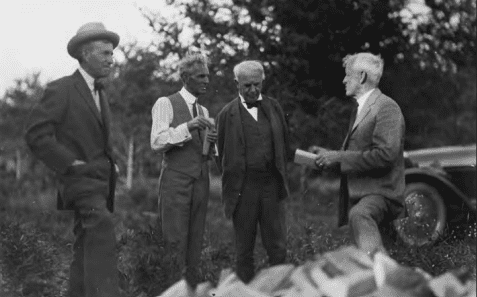
Photograph capturing a meeting between Thomas Edison, Henry Ford, and associates.
POWERHOUSE: Dam It! covers an aspect of American history that is often under-discussed; specifically, the electrification of the country. Can you speak to the vision that motivated dam builders like your grandfather to dedicate their lives to this important work?
Bob Underwood: It is hard today to understand the excitement that surrounded the electrification of America. Edison’s demonstration of the first commercially viable electric light bulb in 1879 liberated society from near-total dependence on daylight and spawned the use of electricity in almost every aspect of our lives today. In fact, the electric light usually is ranked among the innovations that most have changed history, right up there with the wheel, the printing press, and the steam engine.
Edison’s discovery launched the race to electrify America. Electrification drove the American economy from 1900–30. Electric utilities and their suppliers utilized more capital than any other industry. By the early 1930s, 70% of homes in the United States had electricity.
Hydropower was an important part of electrifying America from the beginning. Electricity was generated from two energy sources—coal or waterpower. Where water was available, it was cheaper. By 1940, more than 1,500 hydroelectric facilities produced 30% of America’s electrical energy.
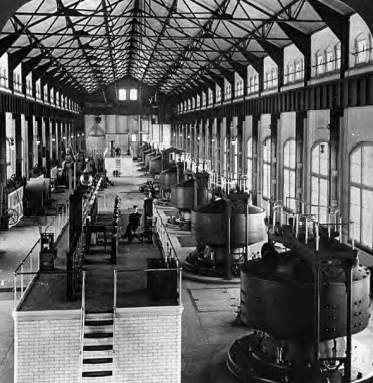
A look into the Niagara Falls Powerhouse.
This was exciting, important stuff. Men like my grandfather wanted to be part of something big that mattered. Americans were viewed worldwide as being inventive, having a talent in engineering, for doing big things. Dams became viewed as national treasures, a monument to American resourcefulness and a model for harnessing forces of nature through technological solutions.
Soon before he died, my grandfather told me that all of us have a duty during our life to try to make the world a little bit better for having been here. He then said that his dams were his legacy, that he believed they helped make many people’s lives better, and that he hoped this legacy would last long after he died.
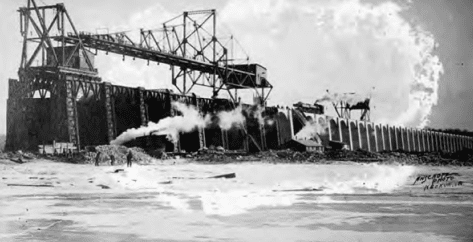
Photo of the Keokuk Dam under construction on the Upper Mississippi River; the dam opened in 1913.
POWERHOUSE: You have said that hydropower was the original clean, renewable source of electricity. Today, in an era where transitioning to clean energy is taking on increased urgency, what is your vision for the future of hydroelectricity?
Bob Underwood: Hydropower remains vitally important today. It is mandatory that the electricity grid provide enough electricity to meet total demand reliably—24 hours a day every day of the year.
As we switch to intermittent renewable energy sources such as solar and wind to meet climate change goals, grid reliability becomes a significant issue. That is where hydropower comes into play.
Hydropower acts as a water battery. When the sun isn’t shining or winds aren’t blowing, hydropower can be turned on in seconds or minutes to contribute electricity to balance the grid. Hydropower currently provides 6% of total U.S. electricity supply, around 30% of U.S. renewable energy, and 90% of U.S. long-term storage capacity.
Pumped storage facilities are particularly effective water batteries. They have two reservoirs at different elevations. In power-generation mode, water from the upper reservoir flows downward through the powerhouse to generate electricity. Water exiting the powerhouse flows into the lower reservoir rather than directly re-entering the river and flowing downstream.
Turbines in the powerhouse are reversible. In off-peak times, excess electrical energy from the power grid drives the reversed turbines, which act as pumps to move water from the lower reservoir back uphill into the upper reservoir.
Total hydropower generating capacity in the US currently is about 80 GW. A recent Department of Energy study concluded that U.S. hydroelectric capacity could be grown 50%, with 75% of the growth from new pumped storage capacity. That would take pumped storage capacity up from 23 GW to about 60 GW.
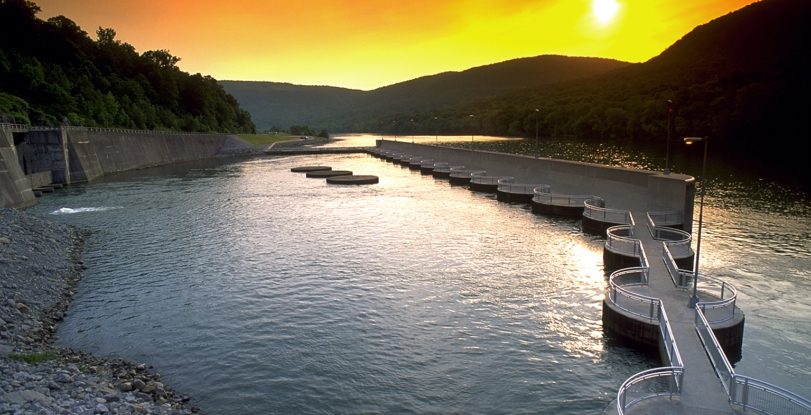
Tennessee Valley Authority’s Raccoon Mountain Pumped-Storage facility.
It should be noted that hydropower is not the sole answer in maintaining grid reliability going forward. Lithium-ion batteries also are part of the equation as their costs come down, but they have their own issues. They now are very expensive, have inherent safety issues, and last maybe ten-to-fifteen years. Other approaches include thermal storage and hydrogen storage.
POWERHOUSE: Now that your first book has been published, what comes next?
Bob Underwood: I am thinking about writing a sequel to Dam It! that examines the critical role of hydropower in today’s age of climate change. Or I may instead do a book of short stories profiling various individuals who took part in the golden era of dam building. All the way from Reclamation’s chief engineer John Savage, to a young surveyor on the Big Creek construction project whose bride moved into a tent with him after their marriage, to a high-scaler working on Hoover Dam.



